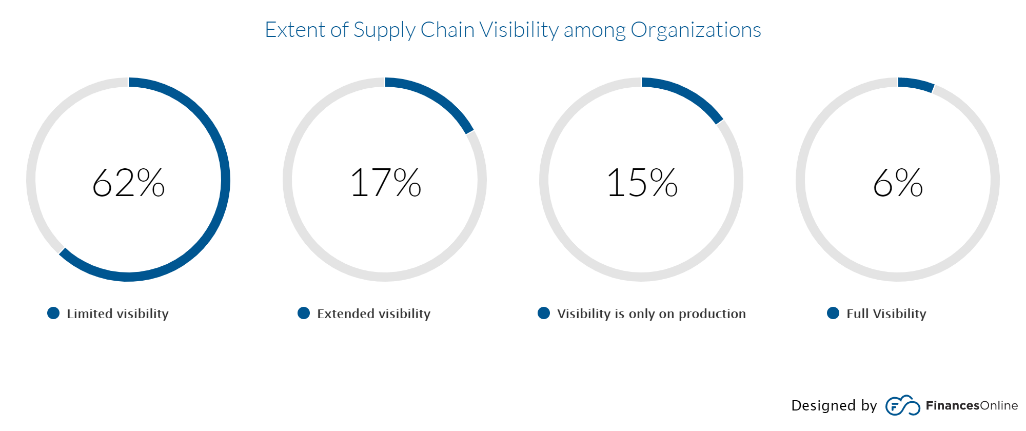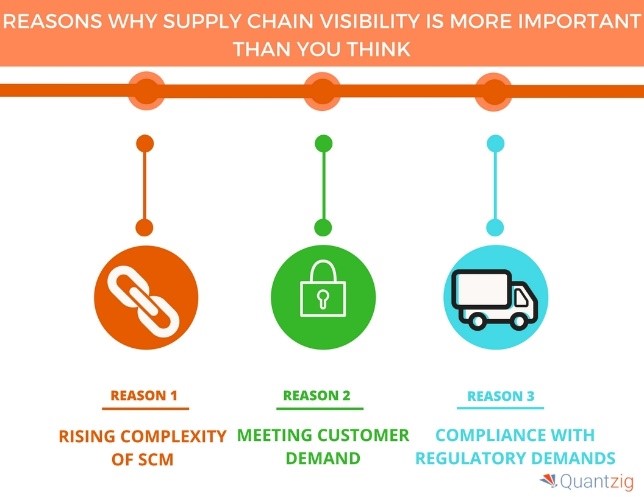Discover how retail RFID is changing the industry for good. This eBook will guide you through the top 10 needs identified by retailers to ensure sustainable success in the modern environment. Explore the common challenges preventing retailers from achieving their goals and learn how applying smart RFID-based solutions delivers consistently good results.
What is in the eBook?
The retail industry is currently ruled by change. The digital age has seen a huge growth in competition from e-commerce and a rapid shift in consumer preferences. This shift has altered the industry greatly with modern ‘omnichannel’ customers demanding to shop where they want, how they want and when they want. Delivering such an experience is a challenge, one that requires brick-and-mortar retailers to change.
In this eBook, we analyse the top 10 needs identified by retailers to ensure sustainable success in the modern environment. Within each of these needs, we identify the challenges often preventing retailers from achieving them, and how applying smart RFID-based solutions can deliver consistently good results.
Improving key metrics in stores
- How retailers use RFID for quick and efficient stocktakes and cycle counts
- Improving stock accuracy in stores
- How smart solutions are being put to use for item-level replenishment, ensuring products and sizes are always available to be sold.
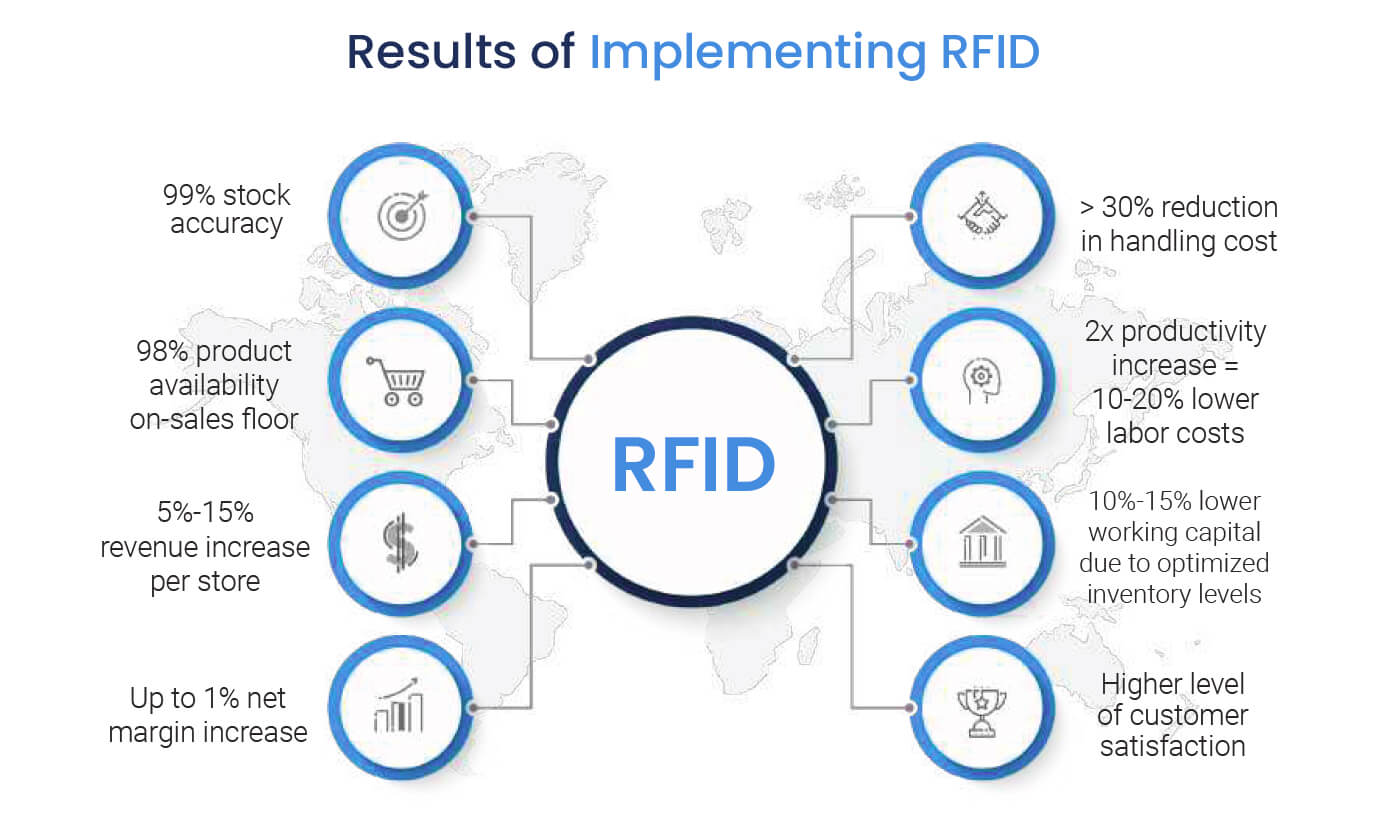
Delivering to customers with retail RFID
- How stores can reduce common customer friction points
- The relationship between RFID and effective omnichannel services
- The advanced retail RFID solutions that improve the in-store customer experience like chatbots and smart fitting rooms.
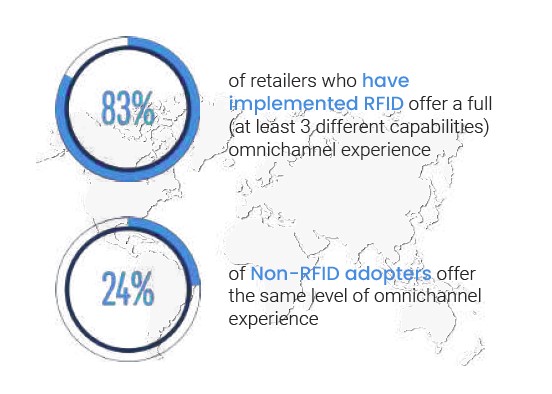
Optimising supply chains from source to store with automated processes
- How to achieve supply chain visibility with real-time info on the movement of products inside and across individual stores and distribution stages.
- How RFID is used to aid logistics at distribution centres, including automated processes like exception handling and order picking.
- What RFID means for retailers’ data and analytics capabilities, such as advanced supply chain traceability and new KPIs for stores and DC’s.
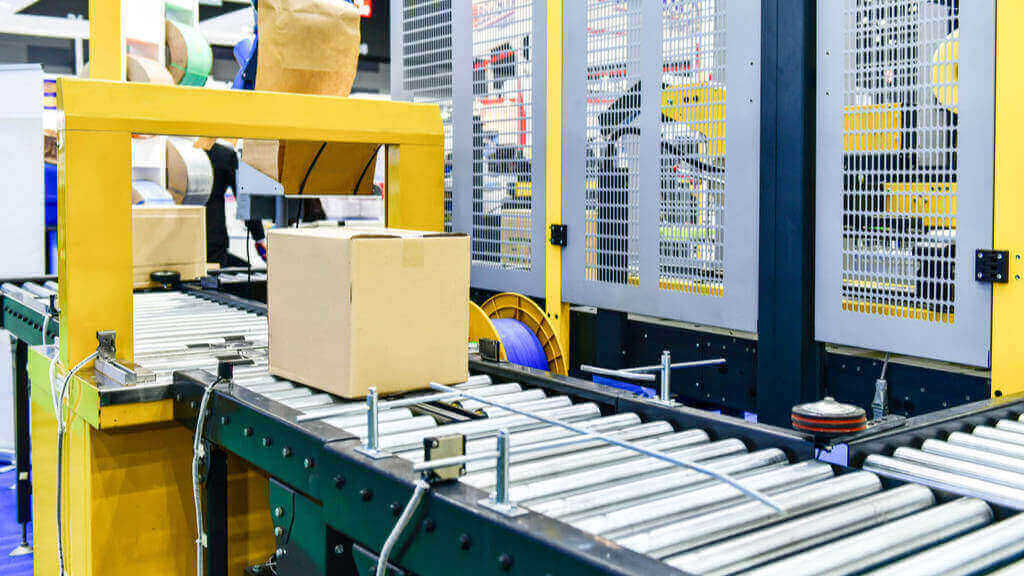
Protecting brands and products from theft, counterfeits and the grey market.
- How RFID can be used to monitor and reduce shrinkage, including theft, both in stores and across the entire supply chain.
- How brands are combatting counterfeit goods by tagging and tracing their products with RFID.
- What the Grey Market means for retail and how several major brands use RFID traceability to locate and stop the source of grey market products.
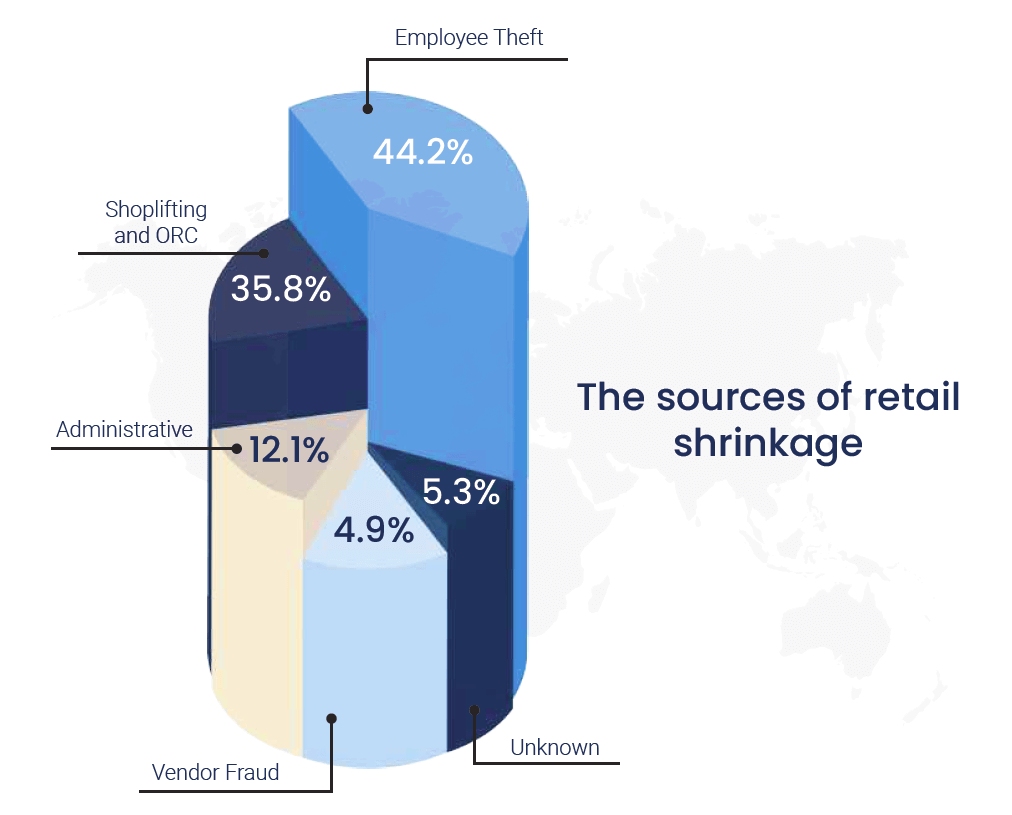
Managing the flow of merchandise in retail supply chains has always been a challenge.
Traditionally, the large quantities being dealt with meant that visibility of merchandise was poor. Items were tracked and accounted for in rough quantities, not consistently or accurately enough to hold suppliers and distribution centres accountable for mistakes and inaccuracies. This meant a fair amount of leakage, either of efficiency or directly in the form of physical shrinkage as items become ‘lost’, damaged or shipped incorrectly.
Fast forward to the present day, with advanced technology like RFID and the IoT, and the standard for retail supply chain management has changed. ‘Supply chain 4.0’ can effectively track and trace individual items from source to store, utilising RFID technology to track individual products and the Internet of Things to store and leverage this information on a digital platform or cloud.
The data and visibility provided by such digital supply chains are extremely valuable, allowing retailers to:
●Quantify the performance of the supply chain (visibility),
●Identify “the last known location of items” (accountability),
●Inspect the history of items and even raw materials (traceability).
Here are the 3 fundamentals of retail supply chain optimisation using item-level data:
Visibility
“To be able to see…”
Supply chain visibility is a growing priority for retailers. According to a report by Zebra Technologies, 72% of retailers are working on digitizing their supply chains in order to achieve real-time visibility. Knowing exactly what is in the pipeline allows retailers to control inventory more efficiently, improve operations between stores and DC’s as well as offer effective omnichannel services and delivery options.
However, the majority of supply chains don’t have anywhere near this level of visibility, as 62% of supply chains operate with a limited view over merchandise flow. This is because goods move along the supply chain in such large quantities, and most supply chains only account for cartons of items, rather than the items themselves.
For example, cartons of T-Shirts with quantities of around 50 are commonly sent out, but without RFID accounting for individual products, you can’t know if the quantities are correct. In other words, you are guessing what should be there as you do not have the visibility to know what is there. This may result in a store believing they have less or more products than they actually do. If however, they do identify the mistake, without visibility over the supply chain there is no way of knowing where the error occurred.
RFID technology can make every step along the supply chain visible while also providing a meaningful context, using digital ‘touchpoints’ to track items throughout their journey. RFID Tunnel installations can even automatically process these cartons, to identify shortages and surpluses all without opening the box. This way large inbound and outbound shipments can be processed quickly, accurately and down to the item-level.
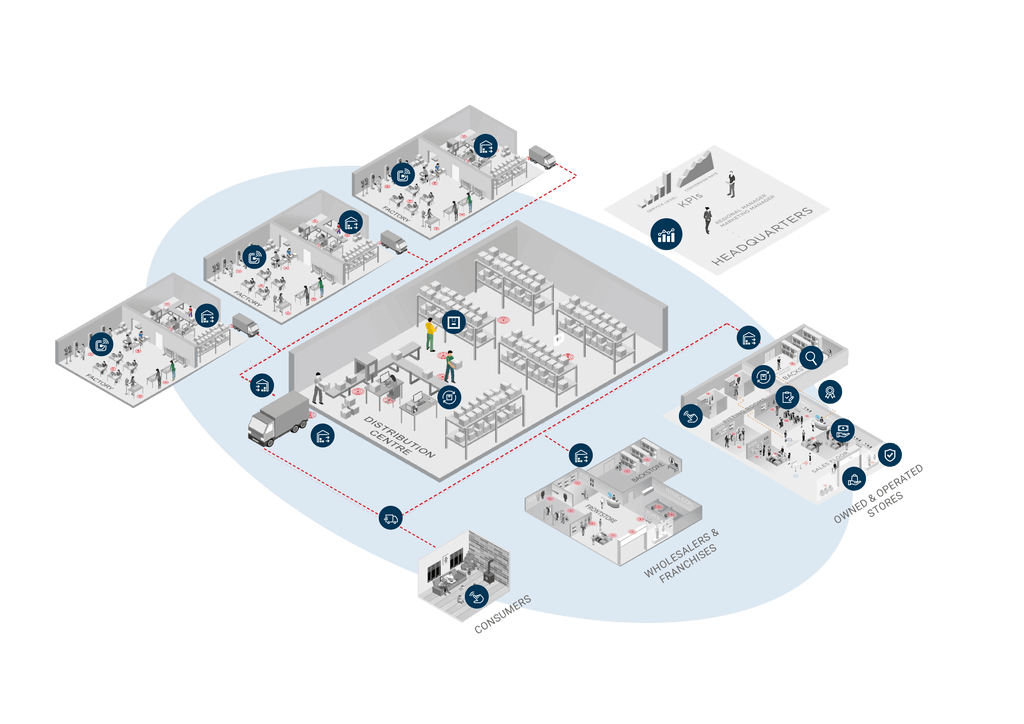
Traceability
“To be able to verify the history…”
If supply chain visibility allows us to know where items are right now, traceability means being able to look back at where they have come from. As items are tracked through the supply chain with RFID, a record of all read events is stored on the cloud. Not only this, but the data from the product journey can be combined with similar data from materials used in each product. This information means retailers can not only see the last locations and events of items but they can also:
- Inspect their history (inception to sale)
- Change layers of abstraction (e.g., from item to carton)
- Go back to the source (materials sourced from cotton farms)
Having the ability to trace individual items back through the supply chain allows retailers to identify where shrinkage occurs and trace products back to the source in the case of a product recall. The traceability is also key as it involves keeping a permanent record of supply chain flow, not only does this mean valuable data, it also gives supply chain leaders the concrete evidence to hold suppliers accountable…
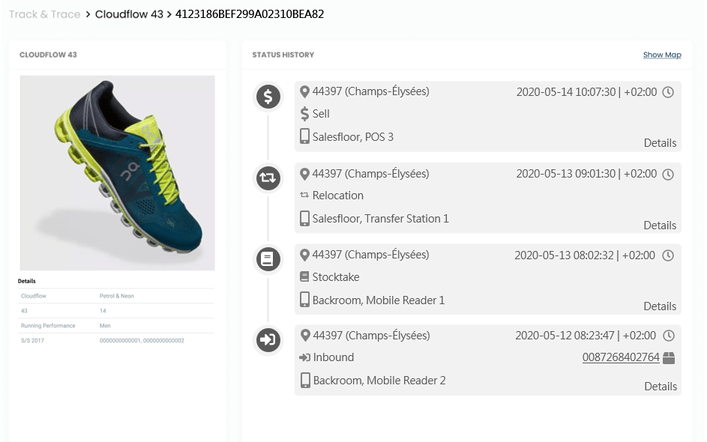
Accountability
“To be responsible…”
With digital track and trace technology in place, retailers will have access to the all-important last known location of items.
This means it is possible to identify where errors occur and hold supply chain and retail partners accountable. On the other hand, it can also serve as proof of service.
This information is also invaluable when it comes to brand protection. Not only can RFID technology easily identify counterfeit products but using the last known location of products allows retailers to identify how legitimate products end up on the grey-market. This is achieved by tracing them back to their last known location in the supply chain.
Knowledge of when and where an item was last seen/did not show up also dramatically speeds up clarification and accountability processes.
These 3 building blocks allow the extraction of KPIs and models to:
- Monitor shrinkage
- Identify grey imports
- Minimize counterfeits
- Automate re-ordering via dwell times and throughput
- Identify bottlenecks.
Looking to optimise your retail supply chain? The Detego platform is the end-to-end track and trace solution
Achieving complete supply chain transparency requires implementing an RFID system across your entire value chain, preserving detailed information about each RFID read event of each individual item (such as inbound verification, stocktake or sale). Thanks to that, knowing an item’s EPC (Electronic Product Code) number is enough to find out what, where and when happened to it. This capability is most useful when stores, distribution centres and factories are all integrated with one system – that system is Detego.
With efficient RFID processes from source-to-store, retailers not only gain new levels of accuracy and efficiency but achieve unprecedented transparency of the supply chain. Detego’s Global Track and Trace feature deliver the visibility, traceability and accountability to optimise retail supply chains for sustainable retail success.
Webinar: Item-level reporting from source-to store
Digitisation and data go hand-in-hand. As retail supply chains continue to go digital, a wealth of item-level data on the flow of merchandise through the supply chain is unlocked. In the future, the winners and losers of supply chain management will be determined by who leverages this information more effectively.
Join Detego’s Chief Data Scientist, Simon Walk, as he presents the cutting edge of supply chain analytics and how digitisation is taking the guesswork out of retail logistics.
This webinar covers:
• Item-level tracking of Items along the Supply Chain to deliver accountability, visibility & traceability
• Effective traceability which combats supply chain shrinkage and counterfeit products.
• Using heuristic & Machine Learning based Algorithms to detect supply chain irregularities.
• Using dwell-time data to optimise operational & Supply Chain processes
• Analysing throughput data across factories, DCs and stores
Webinar Recording: Best Practice RFID for Retail Supply Chains
Retail has evolved dramatically in recent years, driven by changing customer expectations, online disruption, and the ongoing digitisation of the industry. Whilst many stores are embracing technology to wow customers and deliver seamless experiences across multiple channels, behind the scenes supply chains are evolving too.
In this webinar we outline how Radio Frequency Identification (RFID) technology is strengthening supply chains and delivering the accuracy and transparency that modern retail demands. Covering the item-level journey from source to store, the presentation will explain how and why major retailers are choosing RFID to digitise and future-proof their supply chains.
This webinar covers:
- The business case and benefits which RFID technology can bring to the retail supply chain
- Key RFID processes and use cases in factories and distribution centres/warehouses
- Best-practice approach and strategy for implementing RFID across the supply chain
- Examples of successful customer implementations and learnings
- Critical insights to successfully manage new supply chain challenges during COVID-19 pandemic
Complete Supply chain visibility was once an optional bonus for retailers, but in the modern industry it is becoming more and more of a necessity.
Whilst in the past, limited tracking of shipments in the supply chain was commonplace, in the modern environment with its more complex supply chains, delivery options and increasing customer expectations, retailers need to do more.
This isn’t just us saying so, retailers recognise this too. According to a report by Zebra Technologies, 72% of retailers are working on digitizing their supply chains in order to achieve real-time visibility.
What Is Supply Chain Visibility?
Having visibility means being able to accurately track products and shipments throughout the supply chain, from the manufacturer, to the distribution centre and finally to the store. Having this visibility prevents shipping errors, improves operational efficiency and allows retailers to leverage products to service their customers better.
Why Do Retailers Need Visibility?
Managing supply chains effectively is always a priority for retailers. But as these supply chains get bigger the challenge becomes more daunting. Visibility is needed to align such large operations, and this is before you add new pressures like omnichannel, traceability and online orders.
Additionally, supply chain visibility is arguably even more important in ecommerce than for pure-play brick and mortar retailers. Not only do you need to know exactly what stock the fulfilment centre has, but what stock it is due to receive and when. And since pure-play brick and mortar retailers are now few and far between , this now means that most retailers’ supply chains need to be more advanced and transparent than previously required.
This is before mentioning the divisive omnichannel word, which often requires even greater transparency and synergy between stores and distribution centres and includes multiple delivery options.
There are also more classic supply chain challenges that can be helped by achieving visibility. General inefficiencies and inaccuracies can be reduced by adding more checkpoints throughout the supply chain – particularly when these are done at an item level, and not shipment or carton level.
Adding this visibility also makes better communication between different stages of the chain possible, which leads to smoother operations. Having visibility at an item-level also makes traceability of items through the supply chain possible. This can make a massive difference in combatting supply chain shrinkage, and in some cases the grey market.
The ‘New’ Challenges:
Multi/omni-channel businesses – It seems like an age ago, but traditional retail supply chains went in one direction and to one place – stores. Now almost all retailers also run their businesses online meaning their they operate on multiple sales channels, therefore, their supply chains service far more destinations than before.
Multiple delivery options – A relatively recent challenge created by the growth of online and the already mentioned omnichannel purchasing options. Retailers want to offer their customers as much stock and as many purchasing options as possible, but without the technology to support it, this can cause problems. In an Accenture survey, respondents claimed that 31 percent of their Ship from Store orders triggered a split shipment.
Customer expectations – Customer expectations has shifted. In a 2019 report, it was found that Half of shoppers reported abandoning a purchase due to a lack of cross-channel buying options. This is a major impact on sales, and many retailers are starting to adapt to the change in expectations.
The Old Challenges:
Supply chain inefficiency – Supply chain inefficiencies and miscommunication through “Chinese Whispers” are costing UK businesses over £1.5bn in lost productivity according to analysis of industry data from Zencargo.
Supply chain shrinkage – According to the National Security Survey, businesses in the United States lose $45.2 billion through inventory shrinkage a year. Whilst retail stores make up the majority of this, supply chains still experience large amounts of inventory shrink, particularly when they have no visibility of products.
What are the benefits of having supply chain visibility?
-
Better customer service
-
Improved inventory control
-
Shorter cycle times
-
Smoother operational processes between stores and DC’s
-
Better data for more intelligent business decisions
-
Reduce out of stocks
-
Track and trace products
-
Offer effective omnichannel services and delivery options
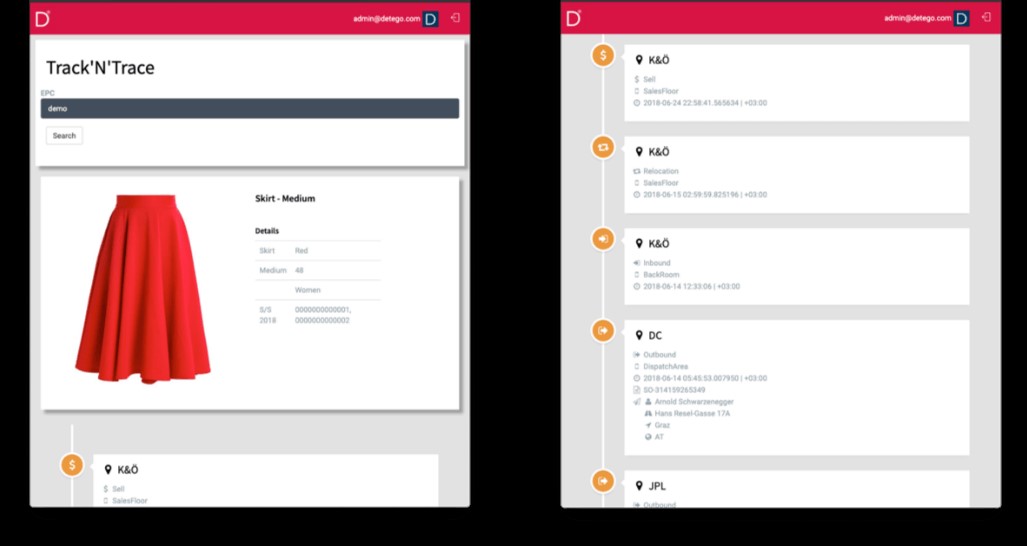
How Do You Achieve Supply Chain Visibility?
-
Implement a system that works at an item-level (not whole cartons)
-
Accurately track products at as many points as possible during shipping
-
Inbound and outbound counts at every stage of shipping
-
Implement effective exception handling
-
Use a cloud-based system to integrate all stages of the supply chain and achieve as close to a real-time view of merchandise movement as possible
-
Send advanced shipping notices (ASN’s) so warehouses and stores now exactly what they’ll receive
-
Use this visibility to enable traceability of each item throughout its journey
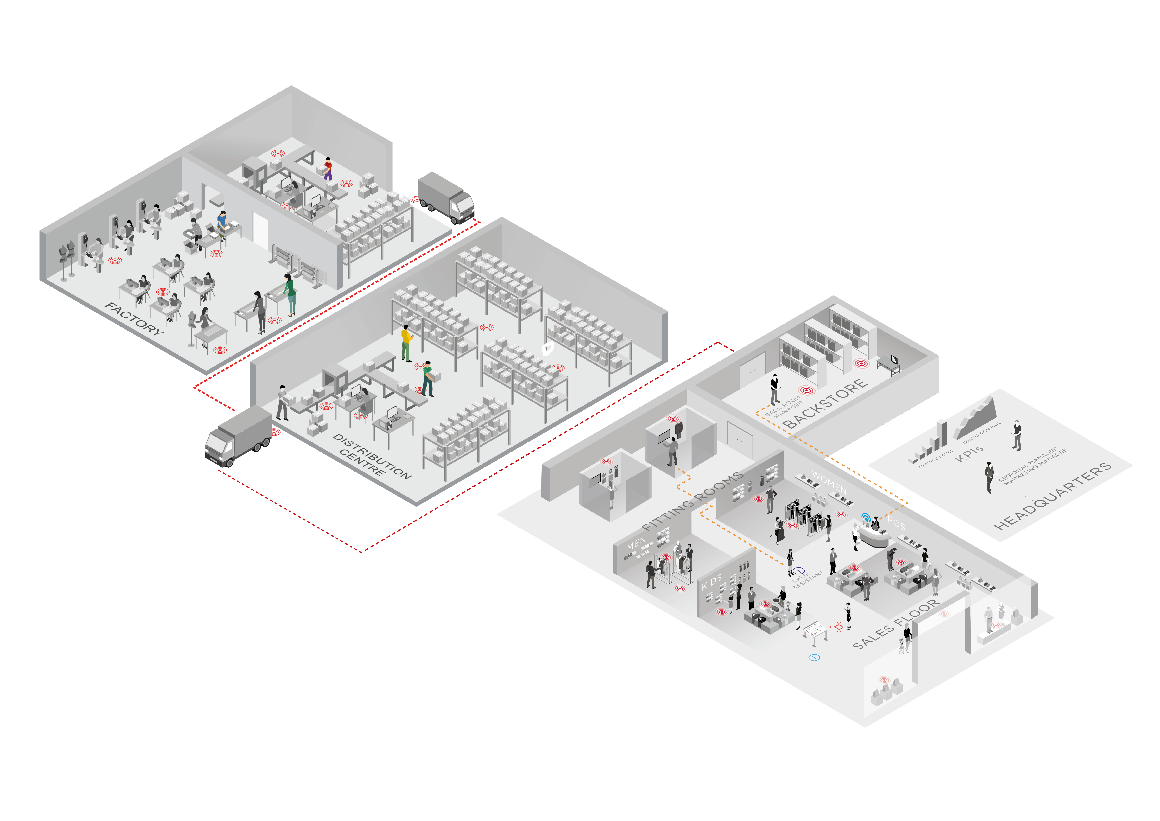
The Detego Platform allows retailers to gain complete visibility over their operations
If you’re looking for a solution or partner to help achieve better supply chain visibility, consider our platform!
Using RFID item level-tagging, the cloud-based Detego platform gives each individual item a unique digital identity. Items are then tracked from factory to shop floor using radio frequency identification (RFID) methods. RFID makes this possible as inbound, outbound and even exception handling can then be done through RFID reads – which are fast, accurate and can be done without opening cartons.
Since RFID works on the individual item-level, the result of this is complete visibility of the supply chain. The platform utilises the IoT to create a complete overview of every single product in the supply chain, as its cloud hosted this can be close to real-time and is the ‘single point of truth’ for the entire business.
Want the latest retail and retail tech insights directly to your inbox?
The 6 Key Benefits of RFID in Retail
RFID (Radio Frequency Identification) uses radio waves to track and identify tags attached to objects. The tags contain electronically stored information and are counted or ‘read’ by either handheld or fixed RFID readers.
In many ways RFID is used in retail as an alternative to a barcode system (although it doesn’t have to replace barcodes entirely). The more advanced technology involved in RFID mean it has a far greater level of accuracy and efficiency when it comes to counting inventory. As a result of this it has far broader applications in retail, most of which are built of off the back of this reliable inventory visibility.
By implementing RFID retailers can on average increase their revenue from 5-15% depending on the business. This on top of a margin increase of up to 1% and 10-15% lower working capital due to optimised inventory levels.
According to research in 2018, 69% of retailers cite a significant level of adoption, and this number is continuing to rise.
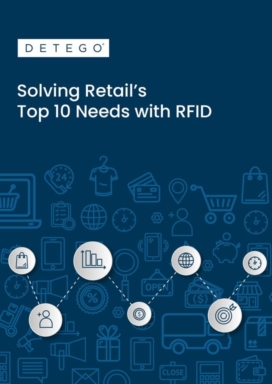
eBook
Solving Retail's Top 10 Needs with RFID
Discover how retail RFID is changing the industry for good. This eBook will guide you through the top 10 needs identified by retailers to ensure sustainable success in the modern environment. Explore the common challenges preventing retailers from achieving their goals and learn how applying smart RFID-based solutions delivers consistently good results.
Inventory Visibility

Due to the ease and accuracy of RFID stock counts, retailers using the technology can reliably achieve full item-level inventory visibility across their stores and supply chains. Crucially, due to the speed of RFID inventory counts, this can be achieved whilst actively reducing the labour intensity of operational processes. This accurate and up-to-the-minute inventory information is the backbone of so many of RFID’s uses in retail (including many of the points discussed below).
One crucial aspect of modern retail that relies on having accurate inventory visibility is Omnichannel retailing. With a complete and up-to-date view of stock across all channels, it is possible to open up the inventory of your entire store network to customers, providing a better customer experience and increasing sales.
Benefits of item-level inventory visibility
- Improved shipping accuracy
- Excellent baseline for advanced omnichannel retailing
- Produces more data for better insights
- Reduces inventory size (and therefore working capital) significantly
- Increased customer satisfaction from reduced out-of-stocks and a more connected experience
Increasing Product Availability

Ensuring a high product availability is vital to maintaining retail sales. Despite this, low on-floor product availability and out-of-stocks are an alarmingly common problem in the industry, causing unnecessary lost sales as a result of inefficient replenishment processes and stock inaccuracy. This latter cause is practically removed completely by RFID, with typical stock accuracy being increased to 99% from the standard 60-80%.
Additionally, RFID platforms provide an unbeatable basis for efficient and reliable replenishment processes. The main advantage these platforms have is the item-level and real-time inventory visibility gained from regular 99% accuracy stock counts.
How does RFID increase product availability?
- Makes regular cycle counts possible with efficient RFID stock reads
- Removes stock inaccuracy (from 70-80% to 99%)
- Creates complete item-level view of stock between both backroom and sales floor
- Item visibility makes replenishment easier and more accurate
- Real-time view allows for replenishment alerts for when items/sizes are running low
- Item-level data from RFID allows for advanced, even AI-assisted planograms for individual stores
Supply Chain Traceability

We’ve discussed the difference item-level visibility makes for stores, but when it comes to supply chains the benefits are just as great. With RFID, inbound and outbound reads become far easier, and are done on an individual item level rather than SKU (stock keeping unit). This means each item is accounted for at each step of the supply chain, rather than just shipments or boxes.
This level of stock visibility also drastically reduces the rate of shipping errors or picking mistakes as they are detected by RFID readers and corrected by warehouse staff during exception handling or outbound reads.
Additionally, the location or status of items and shipments are visible in real-time, so stores and DC’s can easily track shipments and know exactly what they will be receiving. This makes any individual item fully traceable, as time and dates of when the item passed each read point in the supply process can be stored.
Benefits of RFID in the supply chain:
- Item-level visibility across entire supply chain
- Trace items against individual shipments
- Smoother operational processes
- Track shipments for delivery
- 100% inbound and outbound shipping accuracy
Increasing Process Efficiency

The difference in process efficiency from using RFID in retail is extensive, at every end of retail, be it the factory or the shop floor. An RFID reader, regardless of whether its fixed or a handheld, can read hundreds of individual items at once. Crucially though, as each item has a unique ID, they can never be read more than once. The signals also do not require line of sight to be read.
Naturally, this makes RFID inventory counts and inbound/outbound checks incredibly fast and reliable. In the case of store inventories, RFID has been found to reduce cycle count times by a staggering 96%. This therefore means they are far more convenient to perform and can be done multiple times in a week rather than a year.
Processes transformed by RFID:
- Cycle counts/inventories
- Fast & Efficient Inbound & Outbound reads
- RFID-enabled picking and packing
- Mobile guided replenishment from backroom to salesfloor
Providing Real-Time Data

Analytics and data is one area that e-commerce is ahead of physical retail. This is largely due to the fact that everything online can be measured, whereas retailers don’t really know what’s happening with their stores and customers in any specific detail, and the stats and data they do collect are often historical and at risk of being outdated.
However, with RFID this can all change. The simplest and most effective use of the data allows retailers to better leverage their greatest assets; their products and their stores. Quality data and analytics can allow retailers to ensure merchandise is in the right place to be sold. Information on which stores are performing better or worse is a basic retail KPI, but with specific item data, RFID produces far more detailed insights. This includes how well individual items are doing in specific stores, right down to specifics such as which sizes of items are selling better where. Insights such as these are naturally actionable, meaning retailers can take steps to move or reinforce stock at specific stores.
Data insights and results possible with RFID:
- KPI based performance tracking
- Detailed merchandise data & Analytics
- Operational excellence
- Actionable recommendations
- Compliance tracking
- Eliminates reliance on historical data
- Predictive capabilities for inventory counts and merchandise management
Transforming Customer Experience

There are many effects of RFID in retail that go beyond simple operational benefits to actively improve the customer experience. At the most basic level, this includes things already mentioned like increasing product availability, offering convenient omnichannel services and freeing up store associates to spend more time assisting customers.
However, because of the real-time inventory visibility it provides, RFID can go way beyond this in terms of improving the customer experience. For example, with reliable and up-to-the-minute stock information stores can utilise technologies like chatbots or smart fitting rooms to assist customers with their queries, supply information about other items or sizes available and even cross-sell to customers in the store.
What ways does RFID improve the customer experience?
- High product availability
- Store associates have more time for their customers
- Convenient omnichannel services
- A connected experience between online and offline
- AI-powered chatbots delivering assistance and product information via mobile.
- Smart fitting rooms providing a hugely improved fitting room experience.
- RFID-enabled Point of Sale – including self-checkout services

eBook
Solving Retail's Top 10 Needs with RFID
Discover how retail RFID is changing the industry for good. This eBook will guide you through the top 10 needs identified by retailers to ensure sustainable success in the modern environment. Explore the common challenges preventing retailers from achieving their goals and learn how applying smart RFID-based solutions delivers consistently good results.




